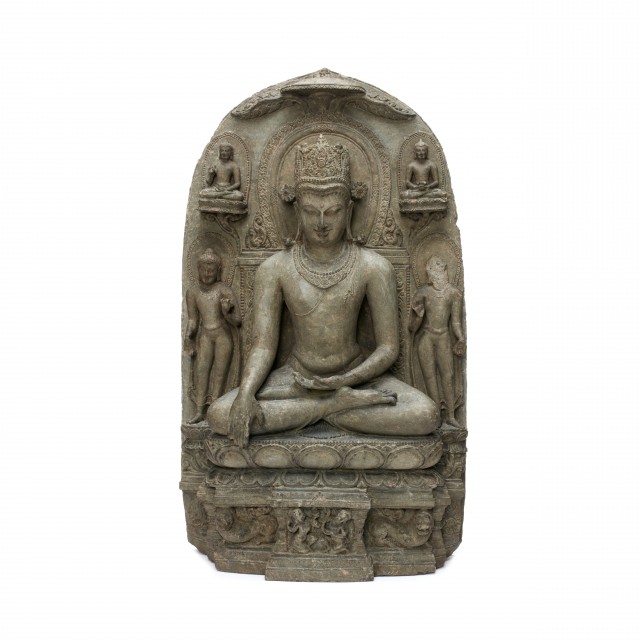
Crowned Buddha Shakyamuni

Photography by Synthescape, Digital image © Asia Society
Crowned Buddha Shakyamuni
11th century
India, Bihar or Bengal
Schist
H. 27 3/4 x W. 16 1/4 x D. 6 1/2 in. (70.5 x 41.3 x 16.5 cm)
Asia Society, New York: Mr. and Mrs. John D. Rockefeller 3rd Collection, 1979.36
Provenance
John D. Rockefeller 3rd, New York, NY; acquired from Christie, Manson & Woods, Ltd., London, 2 July 1962, lot 158.
The Asia Society, New York, NY, bequest of John D. Rockefeller 3rd, New York, NY, 1979.
Licensing inquiries
When Siddhartha, the Buddha Shakyamuni-to-be, left his father's palace, he gave up all worldly goods and cut off his long hair. As a result, Buddhas are usually shown clothed in the garments of a monk and without jewelry. However, Buddha images created in the service of Esoteric or Vajrayana Buddhism, a later branch of the religion, are sometimes shown crowned and jeweled. Among other things, these adornments emphasize the Buddha's role as a universal sovereign. In this depiction, an ornamented Buddha is surrounded by four smaller images of himself, each of which represents an important scene from his life. The placement of the inscription (the Buddhist consecratory formula) on the pedestal of the image rather than near the figure's head and its paleography suggests that it may be later in date than the image itself. The inscription's unusual placement below the image might have been necessary because it was not part of the original design and had to be added wherever there was space for it.
Inscription:
Ye dhamma hetuprabhava hetthamdesham thagattahyavadentesham Yonirodha evam vadi hyavamte Moha Sramanah.
"The dharma which is produced by the cause and the reason of all the causes and their cessation are said by Tathagata [the Buddha], the great sramana [monk]."
Inscription read and translated by Dr. B.N. Mukerjee.

